Understanding Security Clearances in Australia
Securing a role within the Australian government is a career goal for many tech professionals. However, as government agencies often deal with classified resources and information, their employees must adhere to security requirements and operate with integrity. A government security clearance is the most effective way to demonstrate your commitment and integrity as an employee, and give you access where required.
If you’re considering a government role, understanding the basics of security clearances and how to apply for one is essential. This article answers commonly asked questions about security clearances in Australia and the application process, taking you one step closer to your dream public sector role. For more detailed information and career support, visit our comprehensive guide to security clearances.
What is a security clearance and why do I need one?
A security clearance, or vetting, is an official status granted to individuals working with the Australian government and other private entities. After completing a thorough assessment, your clearance permits you to access classified information and resources that might be part of your job.
The Australian Government Security Vetting Agency (AGSVA) is responsible for conducting security clearance assessments for federal, state and territory agencies. Depending on your public sector position and the agency you work for, there are specific levels of security clearances available.
The AGSVA performs security clearances to ensure that employees demonstrate integrity, honesty, maturity, resilience, and loyalty. It also solidifies your commitment to adhering to any security requirements of the role and protecting the department or agency you work for. For any agency dealing with sensitive or classified information, it’s an essential checkpoint that all employees must pass.
Which roles require a security clearance?
Not all public sector roles require a security clearance, so it’s best to confirm these requirements in job postings and position descriptions before you apply. If a role requires clearance, this stipulation applies to all employees, including those directly employed by the government and others employed by consulting organisations and recruitment agencies.
To assist our candidates and simplify the recruitment process, Emanate Technology will always specify in our job listings if an active security clearance is required and at what level. If you’re unsure, our expert recruiters are always here to help.
The different levels of security clearances in Australia
There are four categories of security clearances in Australia, depending on the requirements of your role and the agency you work in. Each clearance category dictates the level of information and resources you’re permitted to access, ranging from Protected to Top Secret. They include:
● Baseline Clearance: Ongoing access to classified resources up to and including ‘Protected’.
● Negative Vetting 1 (NV1 clearance): Ongoing access to classified resources up to and including ‘Secret’. It can also grant you temporary access to ‘Top Secret’ classified resources in some circumstances.
● Negative Vetting 2 (NV2 clearance): Ongoing access to classified resources up to and including ‘Top Secret’.
● Positive Vetting (PV): Ongoing access to classified resources up to and including ‘Top Secret’, including some caveated resources.
How to get a security clearance in Australia
Considering applying for a government role but want to have your security clearance ready first? Unfortunately, it’s not that simple. To apply, you’ll need the Australian federal, state or territory government agency you plan on working for to sponsor your application, or have an active AGSVA clearance already. Here’s what’s involved:
1. Get sponsorship
As individuals can’t apply for clearance, you’ll need the agency you plan to work for to sponsor your application. They will then put you in contact with a security officer to start the process.
2. Complete the security package
Your department’s security officer will send you the relevant information and requests in a security package. You’ll be expected to submit an online security questionnaire through AGSVA and provide supporting documents such as ID and employment history. According to AGSVA, 50% of packages contain errors that hold up the process, so take your time to complete this thoroughly.
3. Undergo background checks
Depending on the clearance level you’re applying for, the complexity of the checks will vary. Usually, though, they include financial background, references, police searches, and psychometric testing, among others.
4. Receive your clearance
After AGSVA reviews your information and deems you suitable, your security clearance will be granted.
5. Maintain and renew your clearance
To stay up-to-date, you’ll need to revalidate and renew your security clearance after a specific time. The validity of a clearance depends on its level, including up to 15 years for baseline clearance and 10 years for NV1 clearance.
FAQs about government security clearances
Attaining a security clearance can seem like a tricky process at first, but armed with the proper knowledge, it’s a lot simpler to navigate. As experienced and trusted recruiters for the Australian government, Emanate Technology has answers to some commonly asked questions.
What do you need to be eligible for clearance?
To begin the security clearance assessment process and be eligible for clearance, you must be an Australian citizen. Applicants must also have a checkable background that allows assessors to access enough of their history and information to judge their character and experience.
What’s the waiting period for my security clearance?
Many factors can influence how long it takes to approve your government security clearance, including the clearance level, how long it took to complete your application, the availability of referees, and additional information required. Typically, a baseline clearance takes up to 20 business days, and a positive vetting takes up to 180 business days.
How much does it cost to apply?
If you’re applying for a role that requires a security clearance, the agency sponsoring your application is responsible for paying the fees, so there’s no cost to you. The fees range from $800 to $15,000, depending on the clearance level and whether you’re applying for an upgrade, renewal, or cancellation. Once you have your clearance, there’s no ongoing fee to maintain it.
Where can I find more information on security clearances in Australia?
AGSVA’s Security Clearance Applicant Guide Book is a free, online resource that answers any questions you might have about the process. Their official website also features helpful information for clearance holders and applicants, and provides access to the myClearance portal.
What’s the difference between NV1 and NV2 security clearance?
An NV1 clearance permits employees ongoing access up to Secret, and, in some cases, temporary access to Top Secret classified resources. An NV2 clearance, on the other hand, permits ongoing access up to and including Top Secret resources.
Helping you secure your next role
Interested in pursuing a government role in tech but still have questions about security clearances? Emanate Technology can assist. With years of experience helping our candidates find government roles to suit their expertise, we can support you through the process. Contact our recruitment experts today. For more detailed information on security clearances, check out our expert guide to security clearances.






